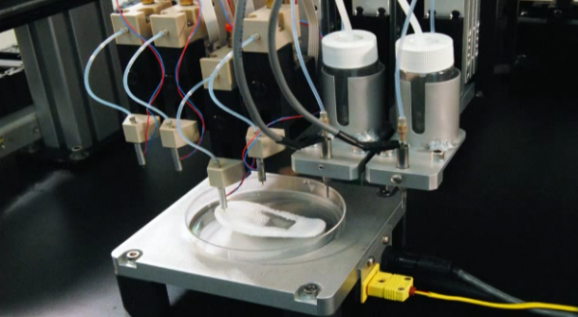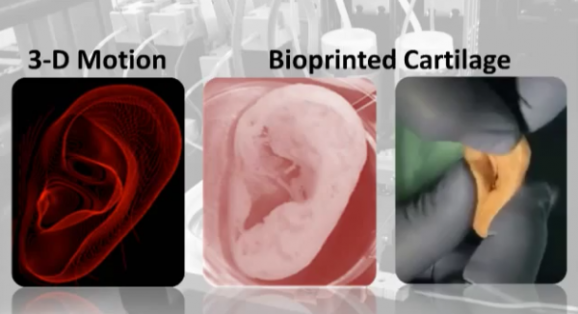Scientists May Be Close To 3D-Printing Tissue And Organs
This article is more than 2 years old
 We’ve been printing a slew of awesome stuff with 3D printers for a while now, including fashions, food, and weapons. But the holy grail of 3D printing has always been organs and body parts. Transplant lists are long — about 120,000 people in the U.S. at last count, and that number increases while the number of organs available for transplant remains the same. Most people on those never get whatever they need; thus, one of the most beneficial uses of 3D printing would be to print organs for those people. Dr. Benjamin Harrison of Wake Forest’s Institute for Regenerative Medicine has built a 3D printer that can print artificial and living cells — at the same time. He’s now using that printer to make body parts such as bones and cartilage.
We’ve been printing a slew of awesome stuff with 3D printers for a while now, including fashions, food, and weapons. But the holy grail of 3D printing has always been organs and body parts. Transplant lists are long — about 120,000 people in the U.S. at last count, and that number increases while the number of organs available for transplant remains the same. Most people on those never get whatever they need; thus, one of the most beneficial uses of 3D printing would be to print organs for those people. Dr. Benjamin Harrison of Wake Forest’s Institute for Regenerative Medicine has built a 3D printer that can print artificial and living cells — at the same time. He’s now using that printer to make body parts such as bones and cartilage.
Wake Forest Institute for Regenerative Medicine researchers have printed skin cells for burn victims by mapping the area first to determine the number of layers of tissue needed. Soon, they’ll use the printers to create minuscule replicas of hearts, lungs, livers, and blood vessels, which can fit on a chip, and can then be integrated into a monitored organ system. In a TEDx Midwest talk, Dr. Harrison makes the case for why he thinks 3D printing of full-sized organs isn’t so far off.

He reminds us that, back in the day, medicine solved problems by cutting out all the problematic body parts. The first successful organ transplant conducted in Boston back in 1954 prompted a huge paradigm shift — that’s when doctors learned they could actually replace whatever diseased body part needed to go. But beyond all the patients who wait for organ transplants, there are loads more who would benefit from tissue transplants. Harrison says that every 30 seconds, someone dies from a disease that could have been treated with a tissue replacement, and that most of us will eventually be in that same boat. So 3D printing isn’t just about printing hearts and lungs, but it’s also about printing custom-made cells and tissue.
He explains that when we get seriously injured, our body panics and does everything possible to survive, even if that means losing functionality. But that doesn’t have to happen — we want the body to go into what he calls “regenerate mode,” not survival mode, so the key is to get the body not to panic, but to focus on healing, like it would with a mild injury. That’s where 3D printing, or what he calls “bio-printing” comes in.
With bioprinters, we could scan wounds, determine what we need to fill them in, and print the right cells to do it. Bioprinters can even convert CT and MRI scans into a digitized and printable form, delivering customized tissue and body parts in a matter of minutes rather than years.
“The impossible can be possible,” he says. I think 3D printing has already proven that to be the case, but something tells me we ain’t seen nothing yet.












